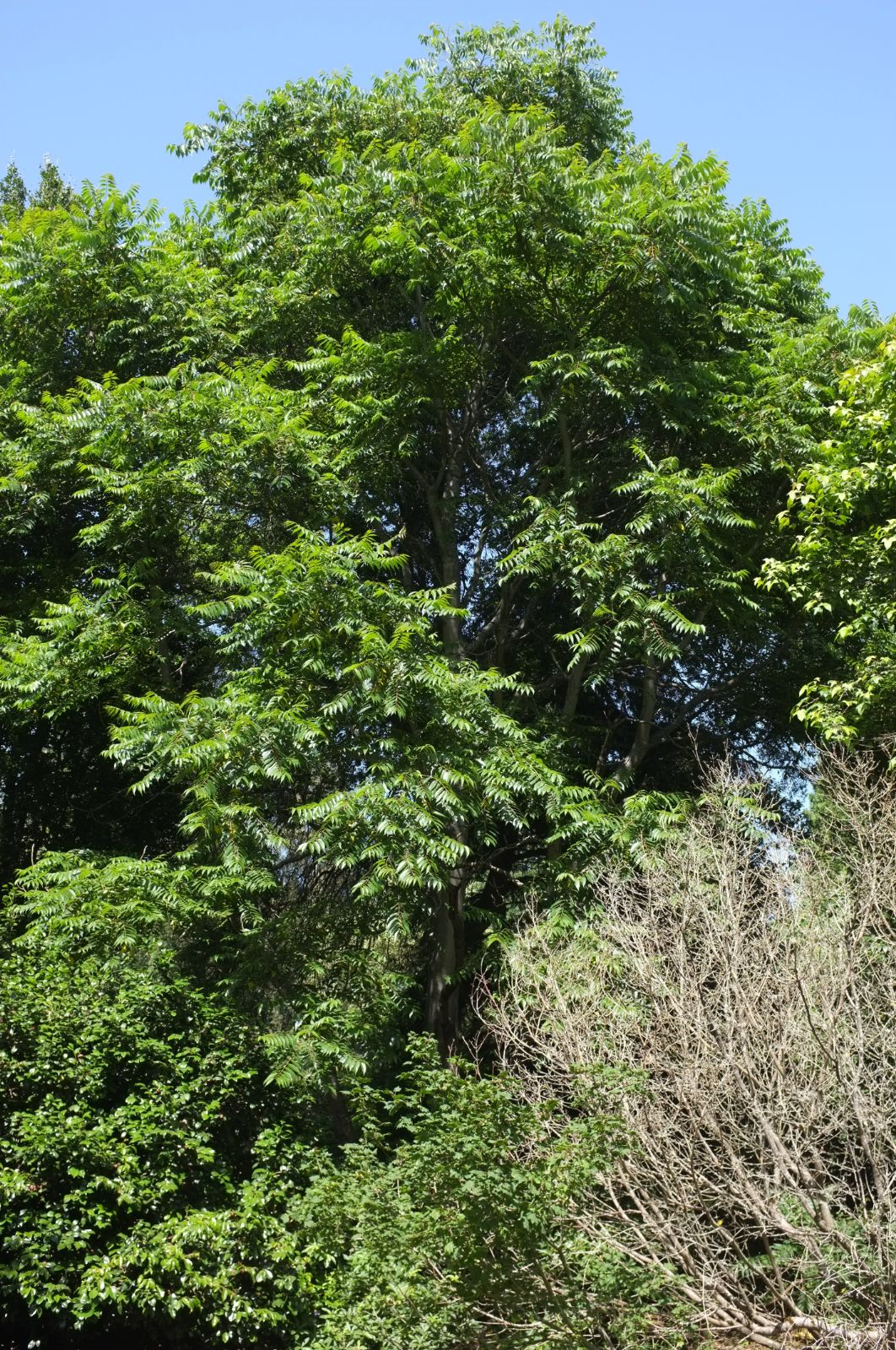Ailanthus vilmoriniana
Credits
Article from Bean's Trees and Shrubs Hardy in the British Isles
Recommended citation
'Ailanthus vilmoriniana' from the website Trees and Shrubs Online (treesandshrubsonline.
Genus
A tree probably of the same dimensions and general aspect as A. altissima, but distinguished by the numerous soft spines which clothe the young branchlets. Leaves pinnate, as large, or probably larger, than those of the previous species and very downy; the main stalk often of a rich red, and occasionally spiny like the branchlet. The inflorescence is sometimes 12 in. or more across, and the keys 2 in. long, with the twist resembling the propellers of an aeroplane even more marked. From this description it will be seen that this species, although similar to A. altissima in many respects (it has the same glandular teeth at the base of the leaflets), is on the whole quite distinct, especially in the spiny branchlets and very downy leaflets.
Native of Szechwan, W. China, whence seeds were sent to Maurice de Vilmorin by Père Farges, the missionary, in 1897. The parent of the older trees in Europe is at Les Barres, in France, where, when I first saw it, it had the spiny character of the branches well marked, but during a later visit I noticed the young shoots were becoming less spiny. It has been propagated by grafting on A. altissima. Wilson, who saw this species during his travels in W. China, remarks that the spininess of the young growths appears to be a juvenile character which disappears as the tree gets older. There are two specimens at Kew, one, pl. 1898, 52 × 5 ft, the other, pl. 1905, 52 × 51⁄4 (1967). Another in the West Dean Arboretum, Sussex, measures 65 × 41⁄2 ft (1967).

